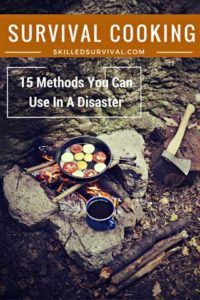
A Complete Guide On The Best Alternative Survival Cooking Methods
Because survival cooking is primitive.
- It’s back to the basics.
- And it’s foolproof once mastered.
It’s cooking without:
- a fancy gas-powered stove
- electric oven
- food dehydrator
- or microwave
Yet still cook up a damn tasty meal!
TOPICS IN THIS GUIDE… ↓(click to jump)
- Why Survival Cooking Matters
- Survival Cooking Intro
- 1. Makeshift Grill
- 2. Makeshift Griddle
- 3. Cooking On A Spit
- 4. Earth Ovens
- 5. Primitive Stone Oven
- 6. Dehydrating Food
- 7. Barrel Stove
- 8. Coffee Can Stove
- 9. Biolite Camp Stove
- 10. Jet Boil Stove
- 11. Dutch Oven Stove
- 12. Solo Stove Lite
- 13. Solar Oven Stove
- 14. Wood Stoves
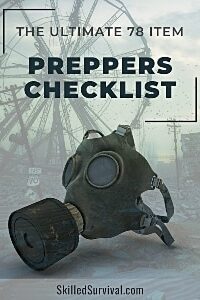
Want a free 78 item prepper checklist?
Click here to instantly download this Complete Checklist PDF. No purchase necessary.WHY Alternative Cooking Matters
I love to cook.
Call me a freak, but preparing my own food, to my taste, in my kitchen, with my ingredients is a favorite exercise of mine.
It’s good for the soul, and it usually ends up tasting pretty awesome.
My kitchen is a sacred space where I wield sharp blades, tend to hot surfaces and mix and match with my vast array of spices.
Sadly, my stocked pantry, spice rack, refrigerator, and freezer won’t always be available.
Likely a future event will shut down electricity, put my home in danger, and compromise my kitchen.
Whether it’s a natural disaster, an extended emergency, or the apocalypse, I won’t be able to cook like I normally do.
And while that’s tragic, we don’t have to call it an end to a good meal.
When everyone else is eating expired canned goods, your family will be enjoying fresh hot meals.
15 Survival Cooking Methods To Master
One of the best parts of cooking in a survival situation is that it doesn’t require a high degree of accuracy.
It’s sloppy science, one you can afford to learn through trial and error.
In fact, in an emergency, you won’t even have the option of gourmet.
Chances are you’ll be working with few ingredients and you’ll be hungry enough not to notice.
This is far from rocket science – more like basic chemistry – hunter-gatherers perfected these tricks long ago.
And if they were capable of doing it, you should be too…
You’re smarter than a caveman, right?
So we’ll start off with the most primitive cooking options.
Then we’ll focus on a few new survival cooking devices to help with your emergency food plans.
1. Makeshift Grill
Let’s start with the easy and the obvious first.
If you can start a fire, you’re already halfway there.
A glowing pile of coals is easier to control than open flames for cooking.
So let your fire burn down to orange flameless coals before turning your fire into a grill pit.
Once you get your bed of coals glowing, find a grate you can use as a grill.
A section of chicken wire or even a chain-link fence will work in a pinch.
Place your grate over the coals and let it get hot (to disinfect it) before placing your food onto the grill.
Now cook your meal to your satisfaction.
↓ How To Make A Disposable BBQ Grill For $2
2. Makeshift Griddle
The makeshift griddle is similar to the makeshift grill.
However, instead of using a grate, you use a flat surface that conducts heat.
Thin, flat rocks work fairly well and are often easy to find.
Sheets of metal, ceramic tile, and other similar surfaces will work too.
Place your flat heat conductive sheet into an open fire and let it warm up for a while.
Then place your food on the griddle and start fryin’.
↓ How To Cook Food On A Rock
3. Cooking On A Spit
This is an age-old method, popularly used for whole pigs.
But the concept works for any animal you can kill, skin, and clean.
Use a metal pole or sturdy wet branch to shank through the meat from end to end.
Note: if you use a dry branch it will burn and your meal will drop directly into the fire.
Prop both ends of the skewer up on forked supports so that the food’s suspended over the flames.
Now rotate the spit to evenly cook your feast.
↓ The Best Bushcraft Camp Fire Setup: Adjustable Spit
4. Earth Ovens
Believe it or not, you can bury your food in the dirt, and it cooks.
It’s true.
Dig a pit and start an open fire in the bottom of it.
Get it really going so you can cultivate a nice bed of coals.
You’ll want to start the fire a good 2 hours before you start cooking and let it burn to a low smolder.
Depending on the size of your food, your fire pit may vary in width and depth.
For example:
If you’re planning on cooking a whole pig underground, you are going to need a 6 x 6 x 6-foot hole and a big fire.
Once you’re ready, cover the fire with large stones.
Then throw a layer of grass or other vegetation down for moisture, and add your food.
Finally, toss an extra layer of vegetation on top and fill the hole up with dirt, burying your food.
Allow up to a half or full day for cooking (depending on size and heat).
Earth ovens are an ancient form of cooking.
It’s been used for hundreds of thousands of years around the world by different cultures.
Way before the advent of electricity or natural gas.
↓ How to Build An Earthen Oven
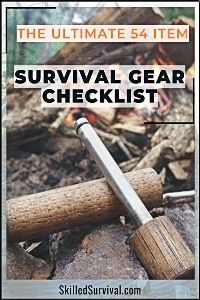
Want a free 54 item survival gear checklist?
Click here to instantly download this Complete Checklist PDF. No purchase necessary.5. Building A Primitive Stone Oven
This is a quick and easy way to make an oven with heat control.
With stones, build a small chamber big enough to fit your meal.
Give it three walls and a top, leaving one side open for easy load and unloading.
Next, stack wood around the stone box and start your fire.
The fire’s heat will warm the stones and the inside of the chamber will get hot.
Hot enough to cook whatever you stick in there.
Control the stone oven’s temperature by adding or removing logs to your fire.
↓ Primitive Stone Oven Build
6. Dehydrating Food
Food dehydration can be accomplished in several different ways.
The easiest is sun dehydration (or sun-drying).
This is where you lay out your food and let the sun suck out the moisture.
Low moisture helps preserve the food, helping it last much longer.
You can also dry food or dehydrate fruit by letting it slowly bake over a heat source (like a campfire) until crisp.
↓ DIY Dehydrating With The Sun!
7. Barrel Stove
If you can get your hands on a steel barrel and have the means to cut it up, make a barrel stove.
They’re a fantastic way of controlling heat for cooking.
First, stand the barrel up on one end, and cut away a rectangular section at the bottom.
This is where you’ll load your wood.
Now, punch about a dozen nail-sized holes in a group about halfway up on the backside for an air vent to allow a draft.
Finally, cut a small section out of the top of the barrel where smoke and air can escape.
You might even attach a chimney-like apparatus if you have the necessary materials.
You can also buy a barrel stove kit to make this process even easier.
↓ Build Your Own Woodstove For $100 ↓
8. Coffee Can Stove
This is a trick I’m pulling straight out of the Cub Scout Handbook.
Get your hands on a tin coffee can. Remove the plastic top and wrap it.
With a knife, punch three or four evenly spaced holes along the base of the tin coffee can.
A coffee can stove is essentially a DIY version of a rocket stove (which is another excellent way to cook a meal).
Flip it over so the opening is on the ground and the bottom is on top.
With a gel candle or firewood, heat the can from the inside and use the flat top surface for cooking.
If you want to control the flame or feed the fire easier, cut a small square hole on the side of the can and add a second smaller can to feed sticks.
↓ Homemade Steel Can Rocket Stove! ↓
Types of Emergency Cooking Stoves
Emergency stoves come in all shapes, sizes, and price ranges. So it’s a sure thing that you’ll be able to find one that is right for you.
Most of the following options can be added to your bug out bag, to your car’s survival kit, or put in your survival backpack.
So if you ever have to get the hell out of Dodge, fast, you’ll always be prepared with a camp stove on hand.
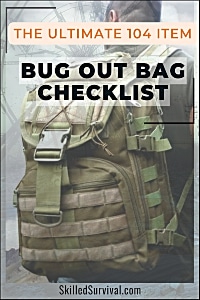
Want a free 104 item bug out bag checklist?
Click here to instantly download this Complete Checklist PDF. No purchase necessary.Here’s a list of emergency camp stoves to choose from.
9. Biolite CampStove 2+
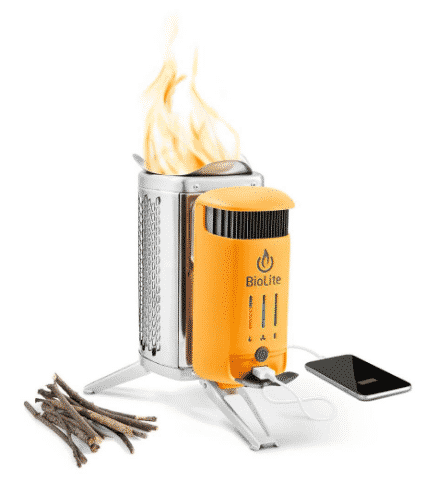
You get three products in one with this nifty little future survival stove.
A heater, a stove, and a charger.
↓ Biolite Campstove 2+ Review ↓
10. Jet Boil Wilderness Stove
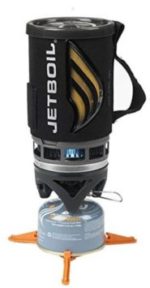
It only holds a single liter but is absolutely perfect for all my wilderness adventure needs.
This will work perfectly for short-term survival situations but you’ll have to stock up on propane bottles for a long-term one.
↓Jetboil Flash – Honest Review
11. Dutch Oven Stove
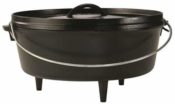
The only downside to using a cast iron Dutch oven is the fact that they’re freaking heavy.
You won’t be adding this to your pack or bug out bag.
However, they’re perfect for a bug out vehicle or survival trailer.
This one has a gallon capacity for meats, soups, or chili.
It also has support legs and is extremely durable and reliable.
↓Dutch Oven Basics for Beginners
12. Solo Stove Lite – Compact Wood Stove
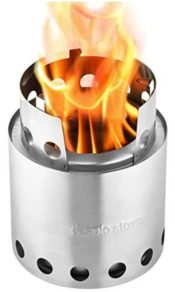
Which might actually be more attractive to some folks.
It’s simply a lightweight, packable, stainless steel stove.
Perfect for those who like to venture out into the great wide open.
Just add wood, light it, and you’re good to go.
↓ Solo Stove Lite Review | Lightest Stove With Unlimited Fuel
13. Sun Oven Survival Cooking Stove
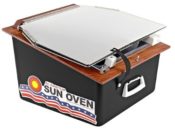
This is a prepared survivalist’s dream tool.
The sun oven can cook any meal you’d cook in a kitchen oven using the power of the sun.
No fuel, no electricity, no wood, just sunshine.
It’s a bit of an investment but you shouldn’t wait for a disaster to start using this survival tool.
Start cooking homemade solar meals all year long and save on gas and electricity today.
↓ All American Sun Oven Review
14. Traditional Wood Stove
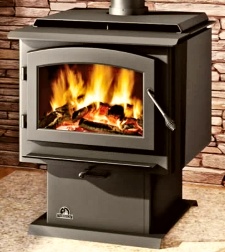
A good wood stove also serves double duty as an emergency indoor heat source.
In a prolonged power outage, nothing’s better than a wood stove to provide both heat and the ability to cook awesome survival meals.
If you’re serious about getting prepared, find a way to install a wood stove in your home or bug out location.
↓ Wood Stove Cooking | Tips and Tricks

Want a free 78 item prepper checklist?
Click here to instantly download this Complete Checklist PDF. No purchase necessary.Creative Survival Cooking
There is a bigger takeaway from all this.
It’s more than just simple cooking techniques.
It’s the bigger idea of preparing, adapting, and overcoming.
- Preparing by making investments in the right tools today.
- Adapting to the situation you find yourself in.
- Overcoming obstacles to survive.
Using any resource available to you to make the most of your situation and to best ensure your survival.
Improvising is a survival skill for any situation, not only when you’re hungry.
It’s like the show Iron Chef – the chefs have no idea what main ingredients they will have to use until the game begins.
Then they have to use whatever they can to create the best meal possible.
In most survival situations, you’ll not know what resources and ingredients you’ll have on hand.
You’ll likely have to make do with whatever happens to be there.
Being able to do this successfully is vital, and it opens the door for infinite possibilities.
You can make a kitchen out of an empty meadow with a little creative survival thinking.
Learn to apply this to all situations and you will go far.
The Final Word
Preparation is the biggest key to maintaining one’s survival.
Eating food is an essential part of staying alive.
So make certain you’re prepared to handle your own sustenance in dire circumstances.
You can’t assume grocery stores and restaurants to remain open throughout a disaster.
Instead, you better understand the basic concepts behind survival cooking and food stockpiling (such as how to make pemmican).
So remember what you learned here today by practicing.
Even if you invest in a camp stove, you should still practice all these cooking methods.
Even the best camp stoves are not reliable 100% of the time.
Someday you may find yourself in need of a makeshift survival kitchen.
And you’re skills and knowledge may be put to the ultimate test.
Why Trust Skilled Survival...
Go here now to review a full breakdown of:
- Who We Are
- Our Credentials
- Our Mission
- & Product Recommendations...
Here are a few highlights of our teams credentials & certifications:
- Certified Member of a Mountain Search & Rescue Organization
- Plant Emergency & Safety Leader for a Major Food Manufacturer
- Member of the 10TH Mountain Division Hut Association
- Certifications: Avalanche 1, WFR, CPR
- Official Gear Tester for Numerous Outdoor Gear Companies
- Countless Multiday Backpacking trips into Remote Wilderness
- Bachelor's Degree In Mechanical Engineering
- Bachelor's Degree In Civil Engineering
- Bachelor's Degree In Biomedical Engineering
"It takes 20 years to build a reputation and five minutes to ruin it." - Warren Buffett
We're fully aware that trust is NOT something you GET but is EARNED.
And we'll continue to earn YOUR trust through our forthright and honest approach with each new Blog Post, Guide & Product we create...
Will Brendza

P.s. Do You Live In A 'Danger Zone' County?
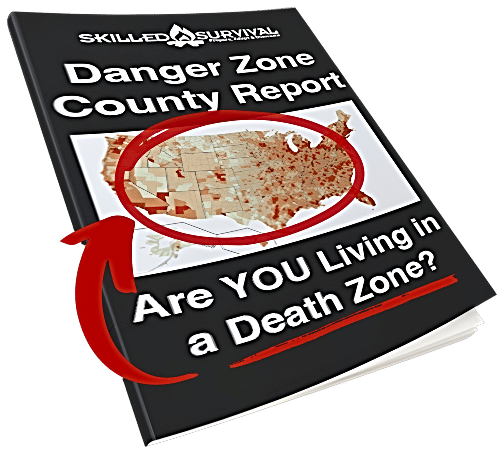
Find out now using my Danger Zone County List & Special Report it’s absolutely FREE.
In minutes you’ll know EXACTLY where you stand and if you should be worried or not..
So click here to get my FREE Danger Zone County List & Report…

Recommended Reading
Survival Pack: How To Build One NOW (before SHTF)
Survival pack list From Scratch. Packs That Will Make You A Hero To Your Family. Plus, Some Of Th Best Packs You Can Buy
Best Survival Packing List To Plan For An Evacuation
Everyone needs a survival packing list to organize their escape. That way you won't regret leaving something critical behind.
13 Best Wild Edibles ANYONE Can Find Nearly Everywhere…
Discover the best wild edible plants you can find and eat nearly anywere. Knowing and identifying these wild edibles could save your life.
How To Make Catfish Bait: My Grandpa’s Ultimate Recipe
I want to share with you what I consider the best catfish bait recipe. Here's how to make stink bait that will get the catfish to bite.
Paracord Projects: 17 Surprising Things You Can Make
I share the best paracord projects that are both fun and useful. By doing these crafts you'll always have lifesaving cordage on hand.
Best Survival Skills Every Adventurer Should Learn
The best survival skills will keep you alive even in extreme conditions. 1. Water 2. Shelters 3. Fire 4. Navigation 5. Signaling 6. Medical 7. Foraging...